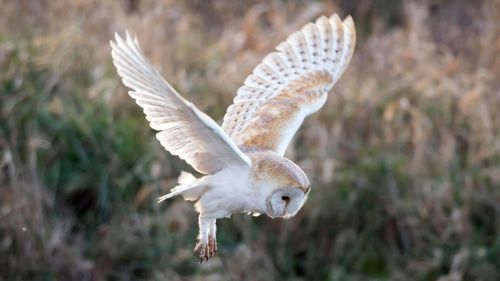January 2022
The Audubon Bird Research Email Newsletter provides you with monthly updates outlining the work we are doing as part of the scientific research initiative at the Audubon Society of Rhode Island. You will also receive emails when we are in need of volunteers for projects. Suggestions and questions regarding the newsletter can be sent to Dr. Charles Clarkson, Audubon Director of Avian Research, cclarkson@asri.org.
Sign up to get the Audubon Bird Research Newsletter in your email inbox!
Nonbreeding Season Data Collection Update
On 1 January 2022, the Audubon Society of Rhode Island initiated a monitoring program across its publicly accessible refuges to collect a baseline data set of the winter distribution and abundance of birds. Using field protocol similar to that deployed by the recently completed statewide Bird Atlas, over 60 volunteers have signed-on to aid in data collection. Concurrent with volunteer surveys, point counts are being conducted across the same refuges by Audubon staff. These two sources of data will ultimately be used to inform management and monitoring across our properties.
This early in the game, data analysis is not possible. We can, however, monitor progress and look at how things are shaping up. To date, six of our refuges have been surveyed by volunteers and a total of 580 individual birds have been counted, representing 41 species. Meanwhile, point counts have detected a total of 642 individuals across 43 different species.
-
As you will note from Figure 1, the top five species encountered along volunteer survey routes versus those detected at point count stations are rather different. It is important to keep in mind that a comparison between these two types of data collection is not useful at this early stage of data, as the refuges receiving volunteer coverage are not the same as those in which point counts have been conducted. Because the habitat varies from one refuge to the next, the list of numerically dominant species across all surveys of a given type is likely to be quite different. With time, as more refuges get surveyed by volunteers and more point counts are conducted, we should see these results converge.
-
-
-
Take the Claire D. McIntosh Wildlife Refuge (Figure 2) as an example. Point Counts have been conducted on this Audubon parcel and it has been surveyed once by volunteers. When we compare the data from these two sources, we see much more agreement with regards to the total number of individual birds counted, the total number of species detected and the overlap in species composition.
A sincere note of thanks to all who have contributed and all that plan to do so over the remainder of the winter data collection period. Data collection will end on 1 March 2022, so be sure to get out and get birding while you can!
Nocturnal and Breeding Season Surveys
-
-
While we are still wrapped up in non-breeding season data collection, it is never too early to think ahead! Two exciting field projects are in the works. This spring, we will be conducting nocturnal surveys to detect owls, nightjars and woodcock that breed on Audubon refuges. These will be fun-filled group outings and ALL are invited to participate. Beginning in May, we will also begin conducting our breeding season surveys on Audubon properties. If you are interested in participating in either of these projects, sign-up below!





















